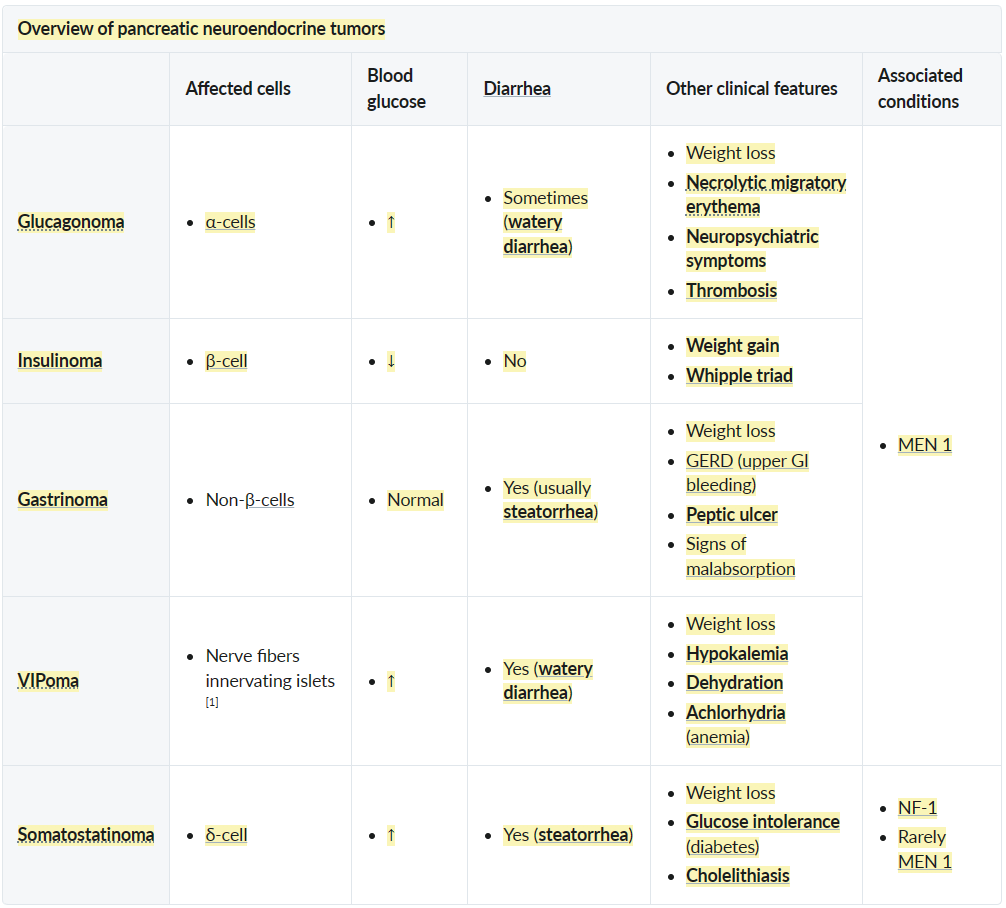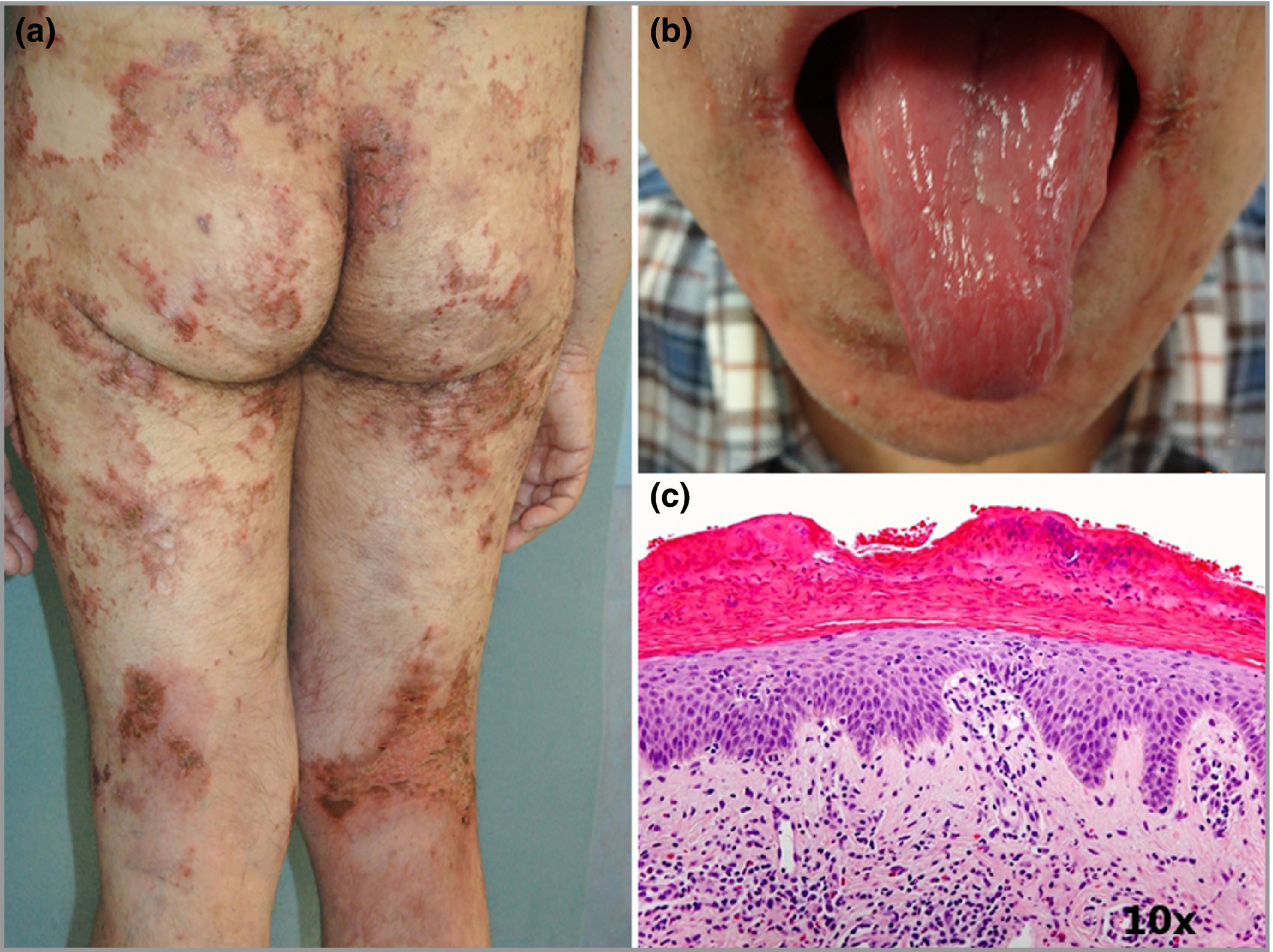
Glucagonoma
- Definition: rare neuroendocrine tumor of the pancreatic α-cells that secretes glucagon
- Clinical features
- Weight loss
- Impaired glucose tolerance or diabetes mellitus
- Necrolytic migratory erythema
- Gluconeogenesis and lipolysis lead to depletion of amino acids, especially those required for maintaining skin integrity and repair.
- A cutaneous paraneoplastic syndrome
- multiple areas of centrifugally spreading erythema, located predominantly on the face, perineum, and lower extremities
- Painful and pruritic crusty patches with central areas of bronze-colored induration
- resolve and reappear in a different location
- Skin biopsy shows epidermal necrosis

- Chronic diarrhea
- Deep vein thrombosis
- Depression
- Diagnostics: requires a high index of suspicion to make the diagnosis
- ↑ glucagon > 500 pg/mL, ↑ blood glucose levels, normocytic normochromic anemia
- Treatment
- Tumor resection
- Octreotide (if tumor is inoperable)
Mnemonic
6 D’s: dermatitis (necrolytic migratory erythema), diabetes (hyperglycemia), DVT, declining weight, depression, diarrhea.
Somatostatinoma
- Definition: a rare neuroendocrine tumor of δ-cell (D-cell) origin that is usually located in the pancreas or gastrointestinal tract and secretes somatostatin.
- ↑ Somatostatin → ↓ secretion of the following hormones:
- Secretin
- Cholecystokinin
- Glucagon
- Insulin
- Gastrin
- Gastric inhibitory peptide
- ↑ Somatostatin → ↓ secretion of the following hormones:
- Clinical features
- Classic triad
- Glucose intolerance/diabetes
- Cholelithiasis
- Steatorrhea
- Achlorhydria
- Classic triad
- Diagnostics
- ↑ somatostatin, ↑ blood glucose levels
- Treatment
- Tumor resection
- Octreotide
VIPoma
- Definition: non-α, non-β islet cell pancreatic tumor that secretes VIP (vasoactive intestinal polypeptide)
- Pathophysiology
- Tumor location: The primary tumor is most frequently found in the pancreas.
- Clinical features
- WDHA syndrome (watery diarrhea, hypokalemia, achlorhydria): tea-colored watery diarrhea (> 700 mL/day) → dehydration
- Diagnostics
- ↑ Serum VIP concentration
- Hypokalemia
- Hypercalcemia
- Hyperglycemia
- Gastric achlorhydria or hypochlorhydria
- Treatment
- Tumor resection
- Octreotide (inhibits VIP secretion)